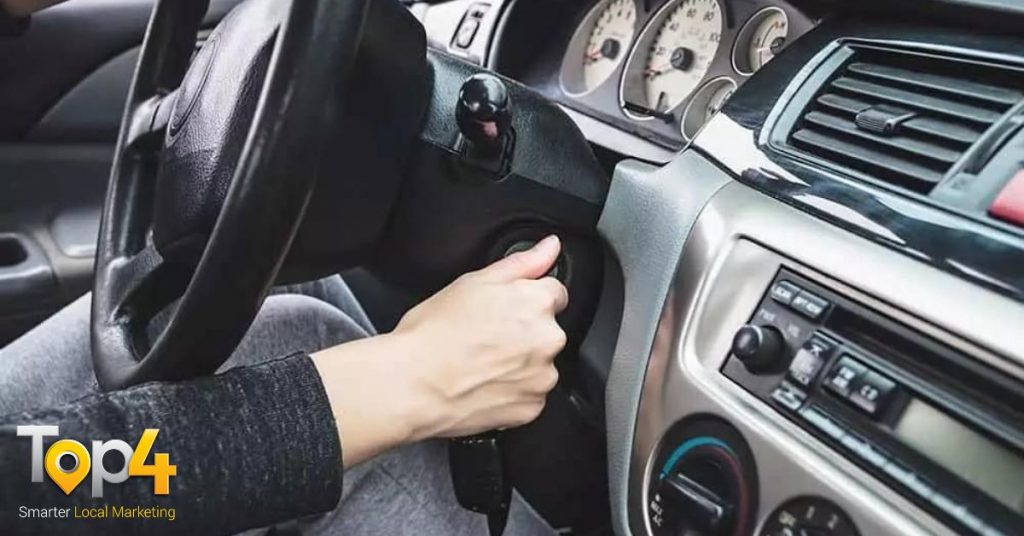Ignition Switch Problems?
An ignition switch is needed to start your car however, like most drivers, you probably don’t consider the complex series of events that take place each morning when you get in your car and drive away. Nonetheless, if your vehicle has ignition switch problems, you may be unable to start the vehicle at all. Ignition switch problems can also lead to issues on the road, such as unexpected shutdowns or electrical issues.  To be sure, ignition switch problems are inconvenient, especially when they prevent you from getting to work, school, or play. If you have an ignition switch problem, addressing it as soon as possible will keep you from becoming stranded. Here’s how to troubleshoot some of the most common problems.
To be sure, ignition switch problems are inconvenient, especially when they prevent you from getting to work, school, or play. If you have an ignition switch problem, addressing it as soon as possible will keep you from becoming stranded. Here’s how to troubleshoot some of the most common problems.
1. Wrong Key, Wrong Car
The average car key has only a few hundred thousand possible combinations. If an automaker sells 200,000 vehicles per year, chances are you’ll unintentionally unlock someone else’s car door—especially since car door cylinders have fewer tumblers than ignition cylinders, resulting in fewer combinations.
Of course, if you use your key to get into the car, you won’t be able to turn on the ignition because of all those extra tumblers. If you do turn the ignition cylinder, the immobilizer will not allow you to start the car because it is protected by one-in-millions of transponder codes.
To fix it you need to double-check that you’re actually attempting to start your own car! This has actually occurred, much to the chagrin of car owners and unintentional felons.
2. Steering Wheel Binding
Because the ignition cylinder is mechanically linked to the steering wheel lock, a potential thief cannot drive the car without the key. If you turn off the engine while the steering wheel is turned or turn the steering wheel after turning off the engine, the steering wheel lock can bind and prevent you from turning the ignition.
Fortunately, this is a simple fix. Simply turn the steering wheel back and forth until the ignition cylinder is released.
3. Worn Key or Ignition Cylinder
Mechanical things wear out, and the same can happen for mechanical keys and key cylinders used in your car’s ignition system. Every year, you may insert and remove the ignition key thousands of times, wearing the key and tumblers ever-so-slightly.
Heavy keychains can put additional strain on the ignition cylinder, causing it to wear faster. The key may eventually fall out of the cylinder or become unable to turn out of the lock position. Or, because they haven’t “worn together,” an unworn key may not turn a worn ignition cylinder.
The best way to fix this is to purchase a new lockset, which includes new keys and a new cylinder. Consider purchasing a matching lockset that includes the door and trunk cylinders.
4. Ignition Switch Fault
A shaft or lever connects the ignition switch to the ignition cylinder itself. Several contacts inside the ignition switch connect vital electrical systems required to start and operate the vehicle.
In general, the ignition switch does not connect anything in the “OFF” position; in the “ACC” position, the radio or fan may be energized; in the “RUN” position, the engine control module is energized; and finally, in the “START” position, the starter relay is engaged. (These generalizations vary greatly depending on the year, make, and model.)
Worn ignition switch contacts, temperature issues, or broken springs can all cause the ignition switch to fail, preventing you from starting your car. On the road, faulty ignition switch contacts could cause the engine to shut down while driving, which could be dangerous.
Replace the ignition switch after ensuring that the rest of the electrical system, such as fuses, relays, and circuits, is in good working order.
5. Immobilizer Problems
Transponder keys are used in modern vehicles with immobilizers to enable or disable engine starting or running. The key’s chip transmits a unique code, one of the millions. If this code matches the ones programmed into the vehicle, engine starting is enabled. An incorrect key code, such as one from an unprogrammed or damaged key, would prevent the engine from starting.
Code “confusion,” such as the use of multiple keys, can also occur, preventing ignition. Electrical issues, such as a faulty immobilizer antenna wiring that usually encircles the ignition cylinder, can prevent the engine immobilizer from reading transponder codes. Finally, some keys have transponders that are amplified by a battery, so a dead battery may prevent the codes from being read.
Replace the battery in amplified transponders. Otherwise, you may need to hire a professional like Locksmith Services to ensure that all keys are programmed to your immobilizer and that the system is electrically sound.
To find out how we can help you with your Website + Marketing, using our unique location marketing platform called Top4, get in touch today at www.top4marketing.com

Looking to build customer loyalty through social media? Don’t forget to add your business to Top4.global




